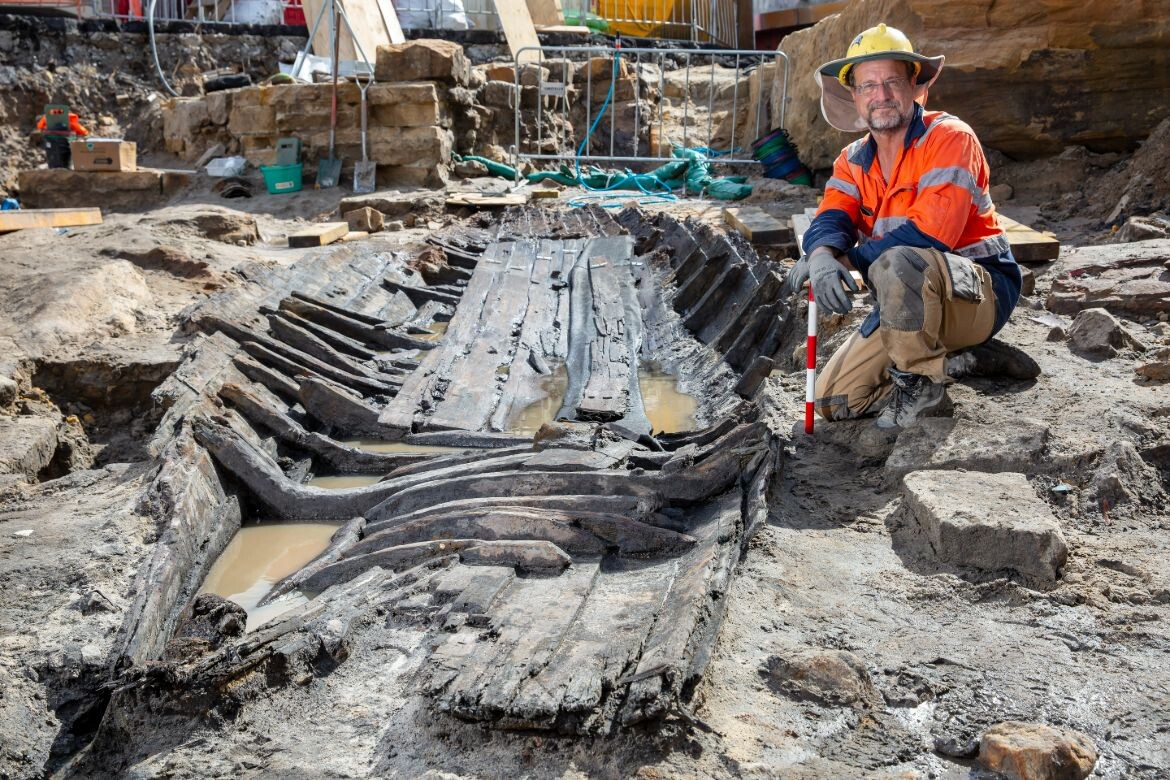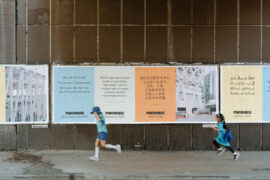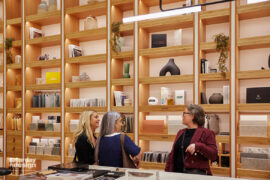From preserved boat remains to 8,000-year-old hearthstones with First Nations significance, Tilt Industrial Designs shares how their technical work is often directed towards heritage.

Barangaroo Boat, Transport for NSW.
May 28th, 2025
In the heart of Sydney’s evolving urban landscape, innovative approaches to heritage preservation are emerging. As major infrastructure projects reshape the city, archaeological discoveries are increasingly being preserved and celebrated through interpretation in their original locations. Award-winning design practice, Tilt, aiming to help bridge the gap between cultural story-telling opportunities and construction challenges.
“Through our work on a diverse range of public domain projects, we’re able to bring snapshots of the past to life — creating moments of discovery that connect people with places and history in unexpected ways,” says Christopher Barlin, Custom Landscape Division Manager at Tilt.

Two of Tilt’s recent projects exemplify the opportunity to successfully deliver heritage interpretation in public spaces. At Barangaroo, the discovery of the remains of a rare pre-1830s colonial timber boat, the earliest found in Australia, during Sydney Metro excavations presented a unique challenge: how to represent this significant piece of maritime history in its discovered context.
Collaborating with the broader project team of consultants including Watpac, Arcadia Landscape Architecture, and Artefact Heritage and Environment, Tilt’s solution embodied an innovative combination of traditional archaeological documentation and modern industrial design.
Barlin explains further: “With the physical timber boat being too fragile to remain in place, a method to reimagine the boat in cast iron was devised. Finding this solution to mimic the grain of the wood was critical to effectively telling the story.”

The technical knowledge and problem-solving skills required to deliver this project were considerable. Working with the provided 3D archaeological scans, Tilt developed the concept, as conceived by the architectural and heritage team into a series of cast iron panels that replicate the anatomy of the original form. The boat installation was also required to integrate seamlessly with the existing paving, addressing pragmatic concerns such as durability, slip resistance and trip compliance.
“Tilt’s creativity, technical expertise and sensitivity to heritage and historical understandings really contributed to the success of this project,” says Carolyn MacLulich, Principal at Artefact Heritage and Environment. “Preserving and displaying heritage in its original context can be an ideal outcome but is often very complex. It would have been easy to simply install a plaque marking where the boat was found. Instead, creating an imaginative yet accurate representation of the artefact in its original location, as this project demonstrates, provides both aesthetic benefits to the site and supports local communities and visitors alike to build deeper connections to place.”


At the Prince of Wales Hospital in Randwick, a culturally significant First Nations discovery required another technical design response. The unearthing of 8,000-year-old hearthstones as part of excavations for construction of the Acute Services Building presented the challenge of preserving ancient artefacts in an outdoor setting while making them accessible to the public.
NSW Government client Health Infrastructure, recognising the significance of these artefacts to Bidjigal history, initiated the collaborative approach. Working with South Eastern Sydney Local Health District, the La Perouse Local Aboriginal Land Council, Gujaga Foundation, S Squared Design, East Coast Heritage & Archaeology, a vision emerged for both preserving the stones and creating a meaningful storytelling experience.

Barlin explains how the team at Tilt took what would typically be in a museum-controlled environment and adapted it for outdoor display: “Our team developed a custom pressure relief and condensation management system for a protective glass dome, that would ensure the preserved stones would remain stable regardless of the weather.”
The Gujaga Foundation took a leading role in ensuring cultural protocols were followed throughout the project. Local Dharawal artist Shane Youngberry was commissioned to create artwork around the hearthstone enclosure, working under the guidance of knowledge holders. Importantly, La Perouse Aboriginal Elders and young people themselves carried out the reinstallation of the hearthstones in their original configuration.
“We can ensure these important cultural artefacts are preserved correctly while allowing our old people and future generations to connect with them,” says Kirsty Beller, Project Lead at Gujaga Foundation. “The installation helps us share evidence of our traditional life with the wider community, showing them through these stones that we camped here, what we were eating and how we were cooking.”
These types of projects represent a growing trend in urban development, where heritage interpretation experiences are increasingly integrated into public spaces. This shift is being driven by several factors, including the NSW Government’s Connecting with Country Framework and a broader movement toward considered place making.
From MacLulich’s perspective, heritage interpretation needs to be fully integrated within development and infrastructure projects. “It honours the narratives of the site, connects with the community, and creates catalysts for conversation and understanding,” she says.

For Tilt, success in these projects comes down to their collaborative approach to stakeholder management. As Barlin notes, “it’s important that stakeholder teams are given space within the projects and are brought on the design development journey. When these pieces are so valuable and rare, it’s critical to get it right.”
As Sydney continues to evolve, this approach to heritage preservation is setting new standards for how we integrate history into our urban fabric. Through technical innovation and thoughtful collaboration, practices like Tilt are helping to ensure that our heritage remains not just preserved, but accessible and meaningful for future generations.
Comment provided by Tilt Industrial Design.
Tilt Industrial Design
tilt-industrialdesign.com



INDESIGN is on instagram
Follow @indesignlive
A searchable and comprehensive guide for specifying leading products and their suppliers
Keep up to date with the latest and greatest from our industry BFF's!

For Aidan Mawhinney, the secret ingredient to Living Edge’s success “comes down to people, product and place.” As the brand celebrates a significant 25-year milestone, it’s that commitment to authentic, sustainable design – and the people behind it all – that continues to anchor its legacy.

London-based design duo Raw Edges have joined forces with Established & Sons and Tongue & Groove to introduce Wall to Wall – a hand-stained, “living collection” that transforms parquet flooring into a canvas of colour, pattern, and possibility.

Where style and substance truly dwell, Gardam’s latest modular collection – available through Stylecraft – balances elegance and versatility.

Type designer Vincent Chan, who delivered a keynote speech with the Powerhouse as part of Sydney Design Week, tells us about the history and importance of this niche profession.
The internet never sleeps! Here's the stuff you might have missed

Saturday Indesign lit up the CBD and South Melbourne with design, wellness, hospitality, and community in a day full of creativity and connection.

Despite its long and rich history, signwriting is a profession in decline. Will Lynes’ new show, Oily Water at Canberra Glassworks, aims to showcase the techniques of the trade to highlight its potential in design.

Karndean’s newly evolved Opus range brings versatility and durability to the forefront of commercial flooring. Blending design-led aesthetics with robust, high-performance functionality, it’s a go-to solution for spaces that demand both style and resilience.